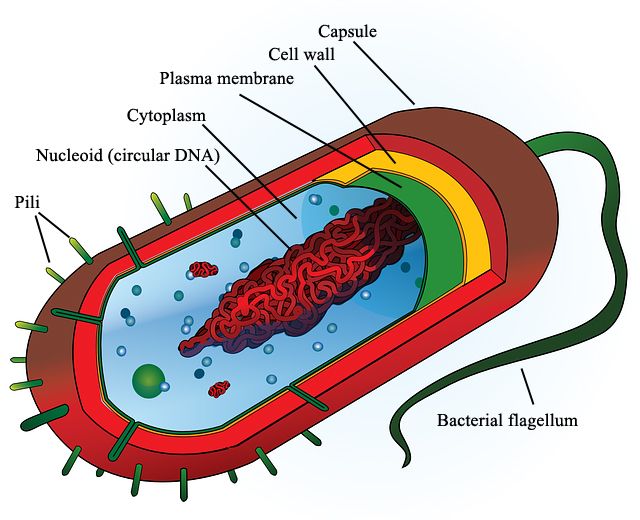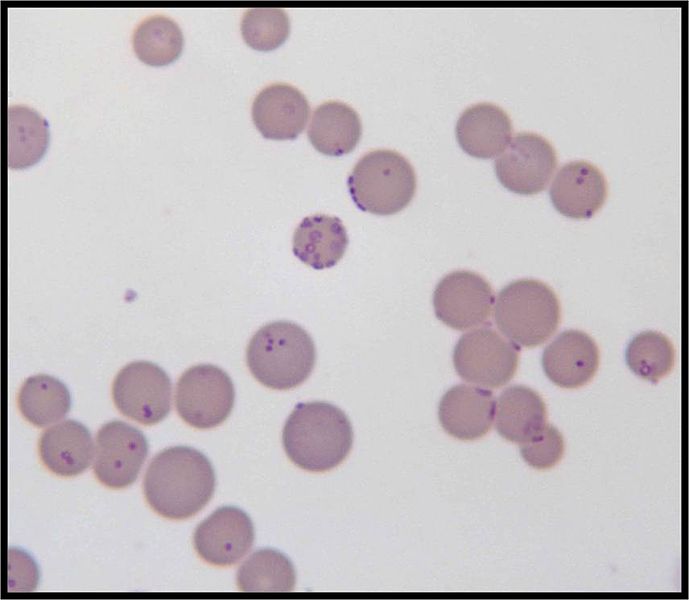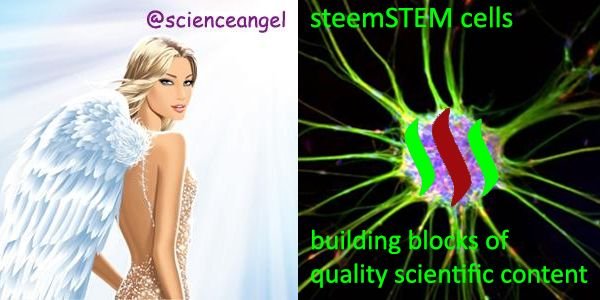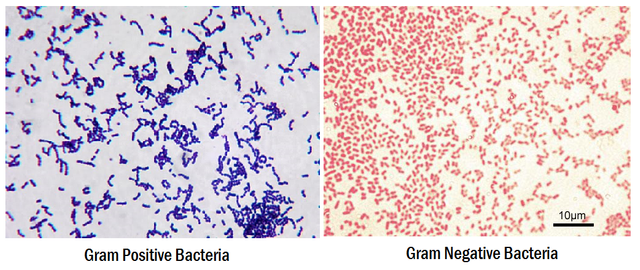Pathogenic microorganisms Part II - Bacteria and Antibiotics
Did you know that we contain about 40 trillion microbes in our body? And that we have about 30 trillion of our cells? That means that the number of microbes living in and on our bodies (called normal microbiota) is the same as the number of our own cells!!!
Cool, isn't it?
Fun fact - during the process of defecation, we actually lose approximately one third of our normal microbiota, which in some way makes us more humans :)

Structure of a typical Gram positive bacterial cell
Today I will write about pathogenic bacteria, which can be divided in following categories:
- Bacteria
- Chlamydiae
- Rickettsiae and Ehrlichiae
- Mycoplasma
Bacteria is a domain of microorganisms falling into the category of Prokaryotes, from the Greek πρό (pro) meaning before and κάρυον (karyon), which means nucleus. The most prominent feature of prokaryotic cells is the lack of nucleus and membrane-bound organelles. Prokaryotic DNA is in form of circular chromosome, and it's mostly located in a central region of the cell called the nucleoid.
Most of bacteria have a structure called cell wall, which is made of a polymer composed of linked carbohydrates and small proteins named peptidoglycan. As an additional level of protection many bacteria posses a capsule, sticky outermost layer of carbohydrates which facilitates attachment of bacterial cell to the environment.
Diseases caused by pathogenic bacteria
Some of pathogenic bacteria cause disease only under certain conditions, for example Streptococcus and Staphylococcus genera typically reside on healthy skin or in the nasopharangeal region, however, they can cause skin infections, as well as more serious conditions such as sepsis, pneumonia or meningitis.
Most bacteria are extracellular parasites, meaning that they reside in-between cells, but there are also bacteria who are obligate intracellular parasites, and they have to grow and replicate inside host cells. Examples of these bacteria are Rickettsia which causes typhus, and Chlamydia, which can cause pneumonia or urinary tract infection. Ehrlichia is a genus of rickettsiales bacteria that is transmitted to humans by ticks, and causes the Ehrlichiosis infection.
On the other hand, there are facultative intracellular bacteria that can exist either intracellularly or outside of host cells. These include Salmonella, Neisseria, Brucella, Mycobacterium, Nocardia, Listeria, Francisella, Legionella, and Yersinia pestis.
Gram-positive and gram-negative bacteria
You must've heard a thousand times about gram-positive and gram-negative bacteria. What is the difference between them?
This classification was made based on the Gram staining technique, developed Dr. Christian Gram in 1884. This staining procedure will either stain the cells purple (gram-positive bacteria) or pink/red (gram-negative bacteria), which reflects differences in the structure of cell walls of these two types of bacteria.
Gram-positive bacteria have very thick cell wall, which retains first dye used in this technique (crystal violet) and therefore, stains purple. Conversely, gram-negative bacteria have a very thin peptidoglycan cell wall, so after the decolorization they fail to retain the crystal violet dye, and after adding the second dye, iodine, these cells will stain red.
Why is this important?
Because both gram-positive and gram-negative bacteria can be pathogenic and cause diseases. However, they show very different sensitivity to antibiotics, with gram-negative bacteria being far less sensitive. The reason for this is that gram-negative bacteria usually have outer membrane that is basically impermeable to antibiotics. Even worse, there are special genus of bacteria called Mycoplasma that lack a cell wall completely and as such they are unaffected by many common antibiotics such as penicillin or other beta-lactam antibiotics that target cell wall synthesis. Also, they develop resistance to antibiotics sooner.

Mycoplasma haemofelis
Source
Pathogenic gram-negative bacteria that are becoming increasingly resistant to most available antibiotics include Escherichia coli, Acinetobacter, Klebsiella and Pseudomonas aeruginosa.
Are there any solutions?
Fear not, because science never sleeps! In the journal Nature very interesting article was published last year, reporting that a molecular Trojan horse can be built that will penetrate gram-negative bacteria. Richter et al. succeeded in converting deoxynybomycin, a natural product active only against gram-positive organisms, into an antibiotic with activity against a diverse panel of multi-drug-resistant gram-negative pathogens.
In conclusion, it is important to keep faith in science and read, read, read (and then read some more!) in order to stay informed and be able to protect and fight against infections properly.
Until next time, relax and keep steemSTEM! ;)
Literature
Revised estimates for the number of human and bacteria cells in the body
Antibiotic breakthrough: How to overcome gram-negative bacterial defenses
Predictive compound accumulation rules yield a broad-spectrum antibiotic
Pictures taken from pixabay.com unless otherwise stated
For more scientific-related content check steemSTEM. Follow me if you like my posts and want to read some more ;) If you have any thoughts/suggestions fell free to leave a comment!


a very interesting post! The current medical system focuses almost entirely on fighting bacteria that are able to evolve and overcome even the best antibiotics' that your modern science as to offer. In the future we will learn to focus on strengthening the body in a variety of ways so that we are able to naturally mi fend off almost all disease. WE have also learned that many diseases stem from the mind, and have been able to cure very many serious illnesses through mind-fitness regimes.
Our own immune system is one of the most complex and powerful systems to combat any parasitic invasion, and is able to eliminate them through tried and tested biological processes. If we keep our mind and body in good health we will find that most cures become irrelevant since illness has been prevented from occurring in the first place.
On another note, you might be interested to learn that in the future we will discover many incredible things about viruses. One example I am allowed to share with you is the discovery of the 'feel good' virus. We have also discovered viruses that can bring what we can only describe as good luck! You can I'm sure imagine how much we have learned from studying these organisms!
Live Long, In good Health, And Prosper!
JL
Yeah true, but I have the feeling science more an more falls behind here. I fear as long people (and the animal breeding industry) keep using antibiotics in excess, we'll always be a step behind.
Even so, let's celebrate every breakthrough we have!
Yes, the only thing that science has failed in is educating people properly, but hopefully that will change one day...